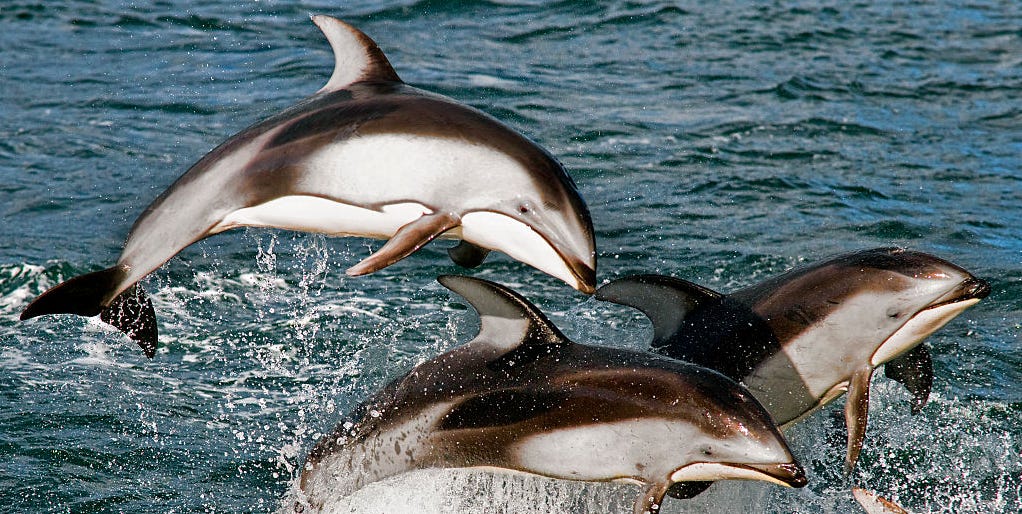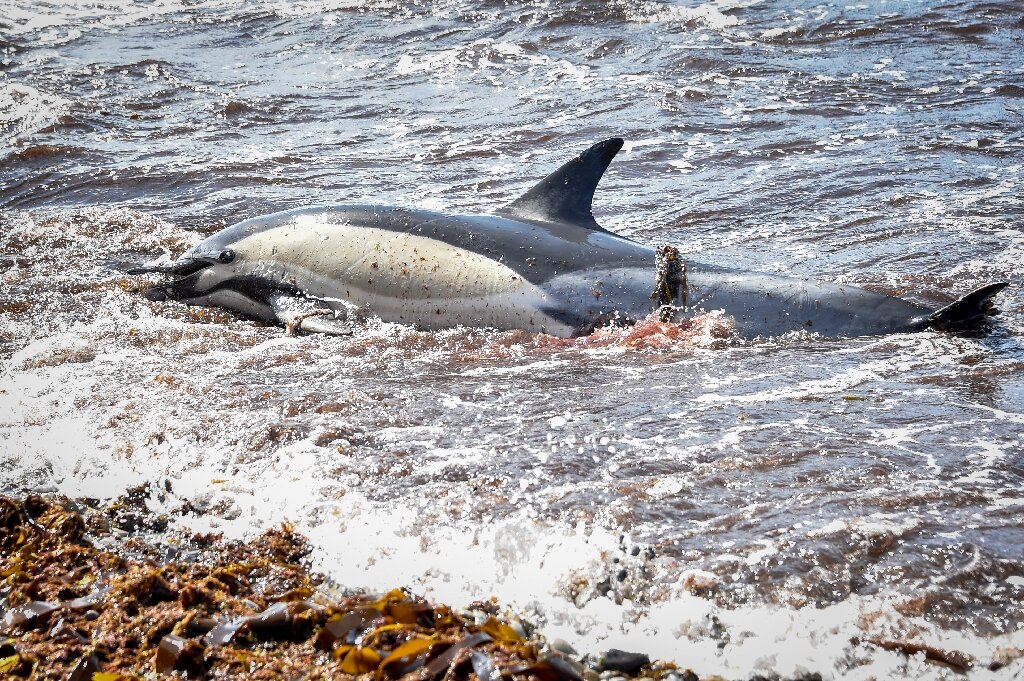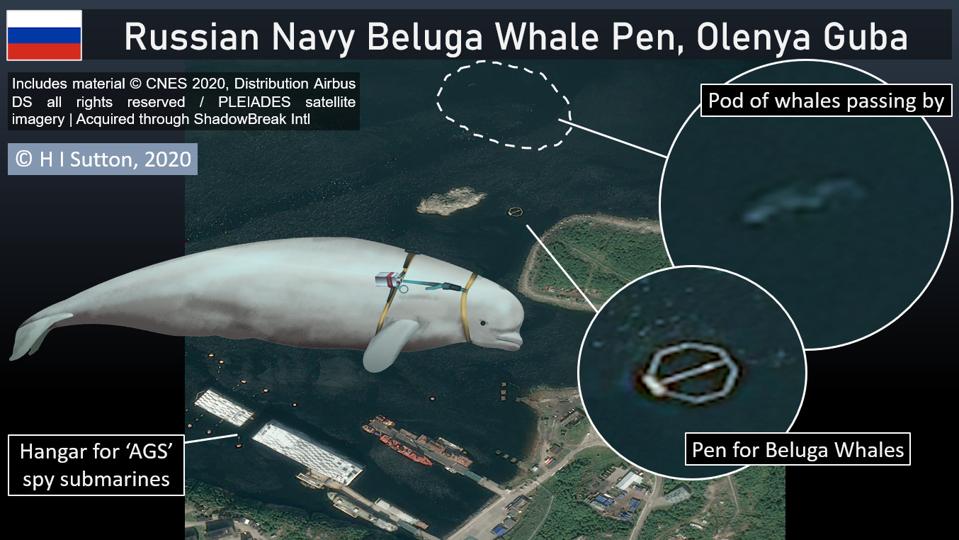
Thousands of Dolphins Are Dying
In the Black Sea Due to Ukraine War
First Post
(June 8, 2022) — The ongoing Russian war in Ukraine is extracting its toll beyond human casualties as scientists are blaming it for the death of thousands of dolphins in the Black Sea.
According to a report by The Guardian, researchers believe heightened noise pollution in the northern Black Sea, caused by about 20 Russian navy vessels and ongoing military activities, are sending dolphins towards their death on Turkish and Bulgarian shores, where they are being stranded or caught in fishing nets in unusually high numbers.
What Is Happening to the Dolphins?
According to the Independent, Ivan Rusev, research director at Ukraine’s Tuzla Estuaries National Nature Park, said in a Facebook post that the marine mammals were washing up on the coastline of the Black Sea bordering several countries, including Ukraine, Bulgaria, Turkey and Romania.
Rusev shared images of washed up dolphins with what he claims to be war-related injuries.

He claimed that the marine mammals have burns from bombs and landmines, as well as internal injuries, and also show signs of starvation.
Since they cannot reach large stretches of Ukrainian coastline, Rusev and his team haven’t been able to survey the extent of the harm to the Black Sea dolphins, however, he estimates up to 2,000 may have been affected.
The Turkish marine research foundation had also raised an alarm about the effects of the war on marine ecosystems in the area.
It said that apart from the polluted water, intense ship noise and low-frequency sonars are a serious threat to marine species, especially dolphins that use sound-activated ways.
The research foundation warned that oil and gas leaks from sunken military ships could also aggravate damages to the ecosystem.

War’s Impact on Marine Life
The Turkish Marine Research Foundation noted that the war has caused a “crisis in biodiversity”. The over three-months long war has caused destruction of endangered red algae, which acts as a “living ground” for many marine species, and feeding grounds for fish — including dolphins — transformed into a maritime war zone.
According to The Guardian, Rusev has counted more than 200 bombs hitting the lagoons, which disturbed water birds such as avocets and Dalmatian pelicans during critical migration and nesting periods.
“Normally, we have between 1,000 and 1,500 white pelicans, which migrate from Africa. Now, we only have 300. They are very disturbed by the bombing,” he said.
Heavy metals and other pollutants also pose a great threat to the coastal biodiversity. Craters made by bombs invite invasive species and chemicals alter the soil’s makeup in fragile ecosystems.
With inputs from agencies
Trained Russian Navy Dolphins
Used to Protect Black Sea Naval Base
H. I. Sutton / USNI News
(April 2, 2022) — Russia has deployed trained dolphins during its invasion of Ukraine to protect a Black Sea naval base, USNI News has learned.
The Russian Navy has placed two dolphin pens at the entrance to Sevastopol harbor, sheltered just inside a sea wall. The pens were moved there in February, around the time of the invasion of Ukraine, according to a review of satellite imagery.
Sevastopol is the Russian Navy’s most significant naval base in the Black Sea. The dolphins may be tasked with counter-diver operations — a traditional role both the U.S. and Russia have trained marine mammals for. This could prevent Ukrainian special operations forces from infiltrating the harbor underwater to sabotage warships.
Inside the port, many high-value Russian Navy ships are arranged out of range of Ukrainian missiles but vulnerable to undersea sabotage, according to satellite photos. During the Cold War the Soviet Navy developed several marine mammal programs, including dolphin training in the Black Sea. The unit was based at Kazachya Bukhta near Sevastopol, where it still is today.
With the collapse of the Soviet Union in 1991, the unit transitioned to the Ukrainian military. Although there were attempts to keep it operational, it barely stayed open. With Russia’s 2014 annexation of Crimea, the unit came under Russian Navy control. Subsequently, the marine mammal programs have been expanded and returned to operational service.
This is part of the Russian military’s wider reinvestment in marine mammal programs in the past 10 years. This has included the Black Sea Fleet’s unit and a separate operation in the Arctic.
In the Arctic north, Russia’s Northern Fleet uses different types of marine mammals. Beluga whales and seals, both with heavy layers of fat to keep warm, are better protected against the cold than the bottlenose dolphins used in the Black Sea.
The Arctic unit has also become more active in recent years. Beluga whale pens have now also been established at Olenya Guba, the secretive naval base of GUGI (Main Directorate Of Deep Sea Research). The intelligence organization is believed to be responsible for key undersea espionage assets of the Russian military.
On April 23, 2019, a trained beluga whale turned up in northern Norway. Nicknamed ‘Hvaldimir’ by the locals, it is believed that this whale escaped from the Russian Navy program, according to the BBC.
It’s not just the Arctic that has shown signs of increased use of Russian marine mammals. In 2018 the Black Sea Fleet’s dolphins were deployed for several months to Russia’s Mediterranean Sea naval base in Tartus, Syria, according to satellite photos. The mobile pens used for that deployment were very similar to the ones currently positioned in Sevastopol harbor.
It is unclear whether Ukraine has planned any combat-swimmer operations against Sevastopol. But dolphins are widely considered by naval analysts a considered an effective defense against divers.
Posted in accordance with Title 17, Section 107, US Code, for noncommercial, educational purposes.

